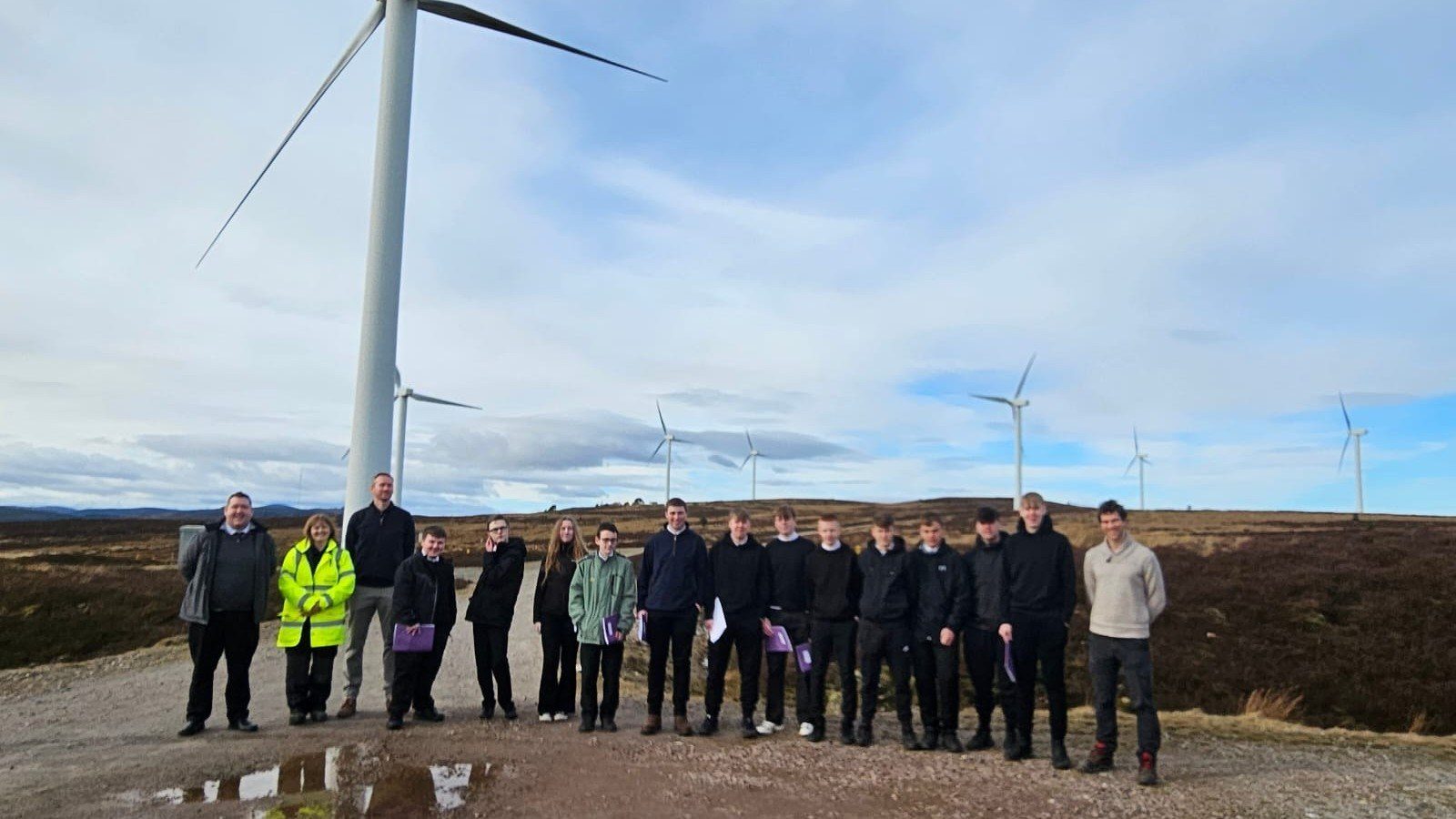This week marks the annual UK Wind Energy Week; a week-long initiative, dedicated to highlighting the growing impact of wind power to decarbonise our economy, reshape our energy system and support jobs and careers.
Running from 23 – 29 June, UK Wind Energy Week brings together industry, communities, schools, and policymakers to celebrate the achievements of the established technology and inspire the next generation.
Onshore wind is one of the cheapest forms of new electricity generation, with significant technology advancements helping to continue reducing the cost. Modern onshore wind turbines now stand between 200 and 250 metres to blade tip and have installed capacities of approximately 6MW.
This means that each individual turbine is capable of generating enough power to meet the average annual consumption of more than 5,000 homes.
An additional appeal of onshore wind is that, once consented, wind farms are quick to build and therefore support in quickly securing UK energy markets and reducing our reliance upon imports.

Students from Bucksburn Academy learning about turbine maintenance at the TRIG-owned Meikle Carewe Wind Farm.
Scotland, in particular, has some of the best wind resource in Europe, making it an onshore wind powerhouse and part of the wider renewable energy industry which in 2022 alone, supported more than 47,000 jobs and £15.5 billion of output. In November 2023, RES submitted its 16-turbine proposal at Hill of Fare, near Banchory in Aberdeenshire, which, if consented, is predicted to deliver a £150 million boost for the local economy, provide 200 construction jobs, and reduce the equivalent of 69,000 tonnes of CO2 each year.
A proposal which is not just good for the environment but good for the economy too.
RES recognises that while wind energy is crucial to combat the climate crisis and increase the UK’s energy security, there is an inherent need to upskill, educate, and provide vocational training to ensure that the industry keeps up with demand from the technology.
Something which UK Wind Energy Week has the chance to inspire by raising awareness of the diverse and exciting job opportunities in wind energy.
In February 2025, students from both the Mearns Academy and Bucksburn Academy were welcomed to the operational Meikle Carewe Wind Farm near Stonehaven in Aberdeenshire, which is owned by The Renewables Infrastructure Group (TRIG) and managed by RES.

Students from Mearns Academy at the TRIG-owned Meikle Carewe Wind Farm with the RES team
Over the day, 40 students in specific energy curriculums across S4-6 were given a tour of the site, learned about how the 12-turbine project was constructed and now operates, and actively participated in a wider discussion on green skills and careers opportunities.
Jon Scally, Bucksburn Academy, said: “The visit got the pupils really engaged and asking great questions. We really appreciate the team taking the time to have the visit, it really was the perfect end to their wind project.”
Aimee Maitland, Interim Director, Developing the Young Workforce (DYW) North East, said: “Site visits are instrumental in helping pupils to contextualise their classroom studies. The pupils, who are working towards their National 5 qualification in Energy, will undoubtedly have gained a great deal from their trip to Meikle Carewe Wind Farm. Given the predicted increase in green jobs, it is vital that our young people are aware of the different roles and associated skills requirements.”
Leigh Duncan, STEM Lead Teacher, Mearns Academy, added: “Our students gained invaluable insight into the real-world application of their classroom learning. The visit to Meikle Carewe Wind Farm not only deepened their understanding of renewable energy but also opened their eyes to the exciting career opportunities in the green energy sector.”

RES team members invited to see Banchory Community Football Club’s newly refurbished changing facilities.
Whilst providing valuable careers and substantial local investment, wind farms also have the ability to boost community projects and priorities through sponsorships and community benefit funds. Most operational wind farms in Scotland offer a community benefit fund to either support local groups or provide capital funds for larger infrastructure projects, like village hall repairs.
An example in Aberdeen is a £5,000 donation to Banchory Community Football Club from RES’ Hill of Fare Wind Farm proposal. This donation allowed the football club to make significant upgrades to the King George V (KGV) Park changing facilities marking a major step forward in improving the infrastructure for local football and community sport.
The completion of the changing facilities comes just weeks after the planning approval to build a new all-weather, multi-purpose sports pitch in the town.
Club spokesperson said: "We’re incredibly proud of the improvements to our home at KGV and excited for the future with the new pitch project. We are grateful for the donation from the RES to allow us to develop and achieve part of our long-term commitment to creating inclusive, high-quality sports facilities for all ages and abilities in the Banchory area."